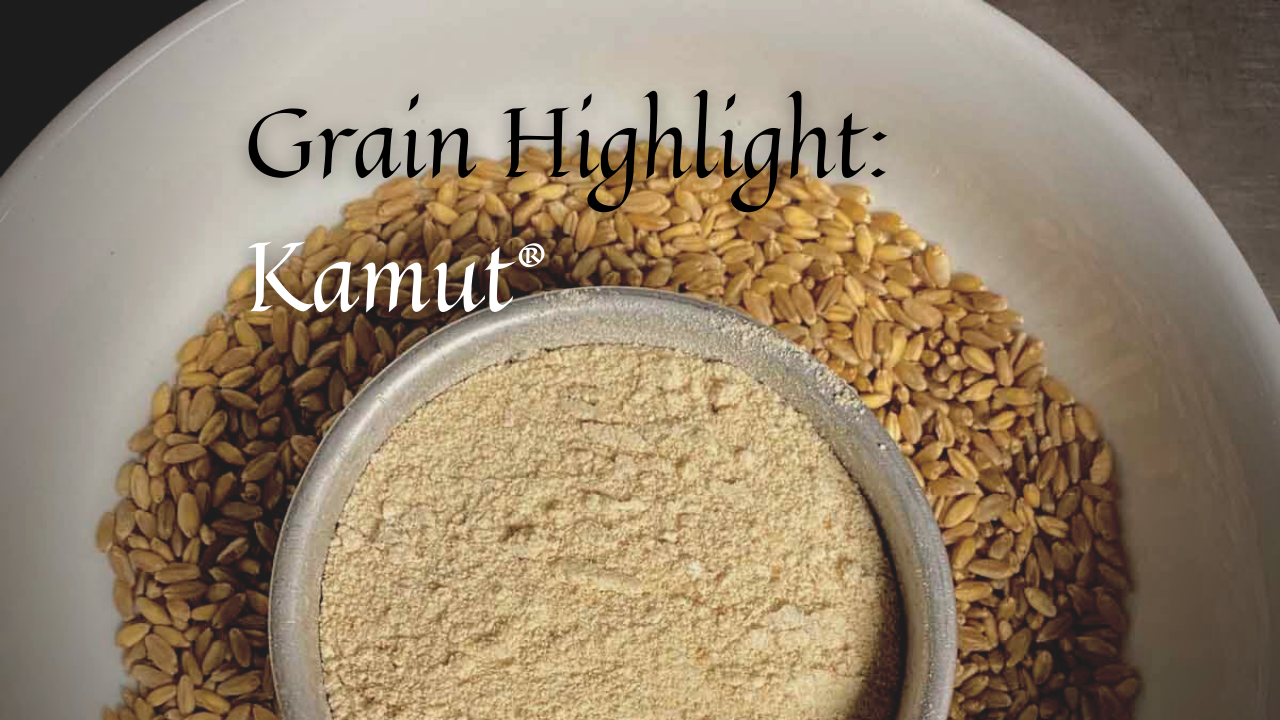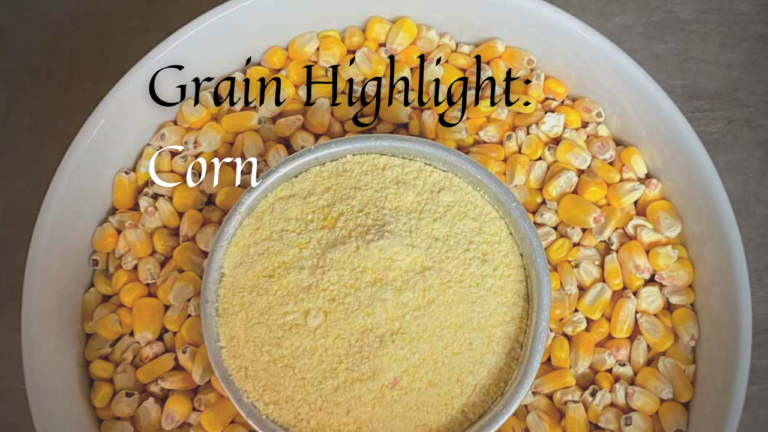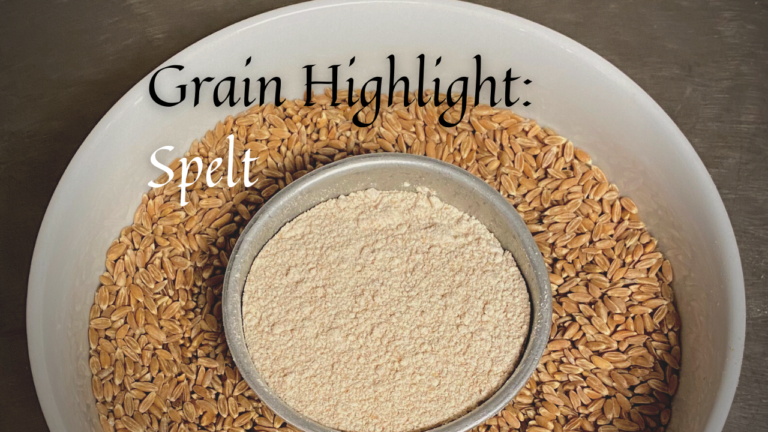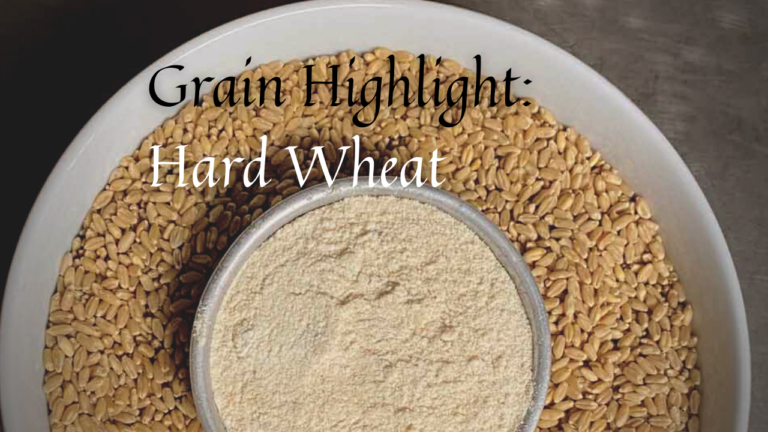This post may contain affiliate links. Read my full disclosure here.
As an Amazon Associate I earn from qualifying purchases.
Kamut® is technically the “name brand” of a grain called Khorasan wheat. I have over a decade of experience in the marketing realm, so I understand branding, and let me tell you – Kamut® has an excellent team of marketers behind its name. They protect the brand well, and that guarantees that you get a quality product, every time.
If you are new to milling grains at home (or purchasing FRESHLY milled grains by someone local to you), I suggest you read my post: Homemade Flour from Whole Grains. It will answer many questions that may arise after reading this.
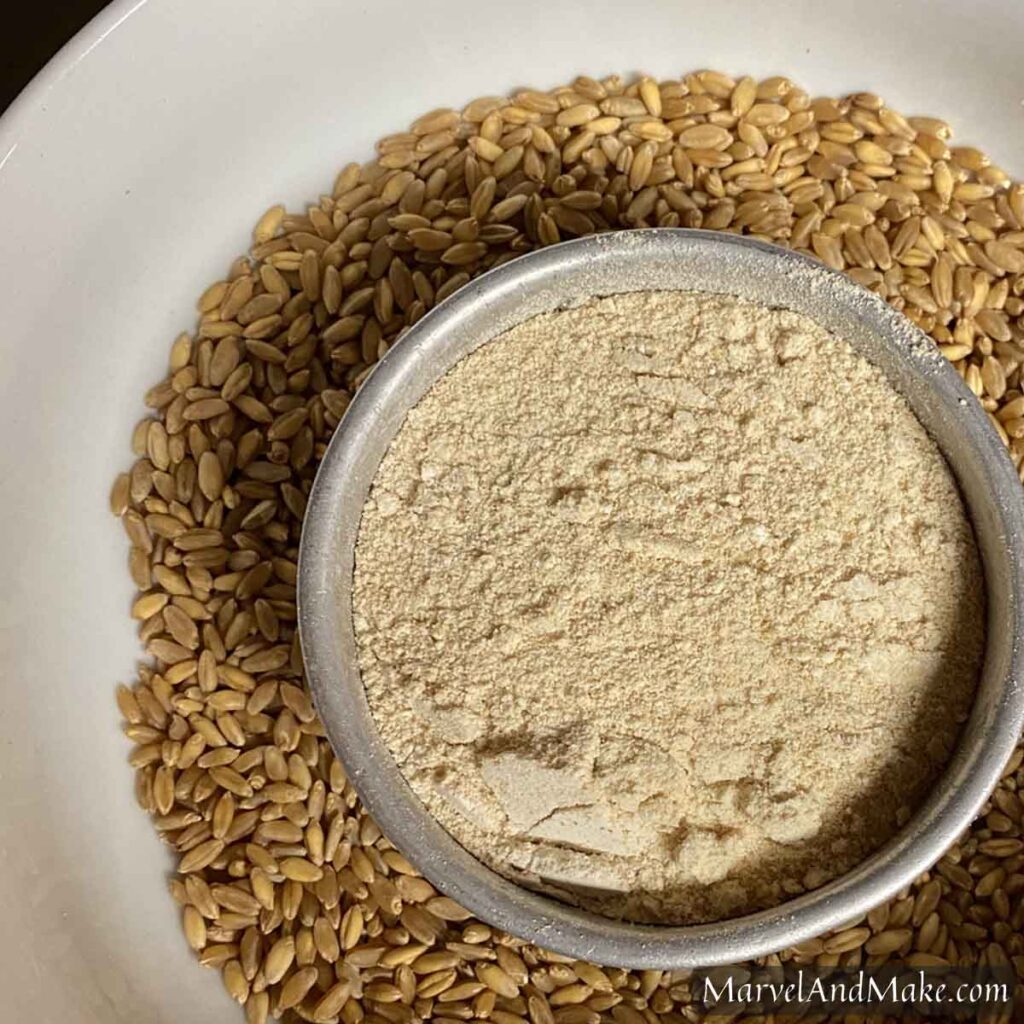
Kamut® is a golden, yellow grain that is quite large. It is considered an ancient grain with a rich, buttery, nutty flavor profile. It’s excellent for yeasted breads and sourdough or non-yeasted breads like pizza crusts, pasta, tortillas, or muffins. It does contain gluten and should be avoided by anyone who has Celiac disease or a gluten intolerance.
Kamut® is the epitome of a “healthy whole grain.” It is extremely nutrient-dense, contains a high amount of fiber and protein, and is linked to many healthy benefits. Some studies show that people who consume a decent amount of Kamut® wheat lower their blood sugar levels. It’s also shown to be beneficial for reducing cholesterol, inflammation, and the risk of heart disease.
Kamut® Recipes to Try:
Even though I don’t have any specific recipes written here on Marvel & Make for Kamut®, I use it quite often. It makes a lovely artisan sourdough loaf – I will use 100% Kamut® flour or blend it with another grain. It also makes delicious pancakes, pasta (I use the Philips Avance Pasta maker), or pizza crust.
If you’re looking to add a genuinely nutritious whole grain to your diet, Kamut® is a solid choice.

